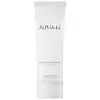What's inside
What's inside
 Key Ingredients
Key Ingredients

 Benefits
Benefits

 Concerns
Concerns

 Ingredients Side-by-side
Ingredients Side-by-side

Water
Skin ConditioningAlcohol Denat.
AntimicrobialGlycolic Acid
BufferingGlycerin
HumectantHydrolyzed Silk
HumectantButylene Glycol
HumectantMaris Sal
Skin ConditioningSodium Carrageenan
Emulsion StabilisingPotassium Hydroxide
BufferingNelumbo Nucifera Flower Extract
Skin ConditioningOrchis Morio Flower Extract
SoothingPolysorbate 20
EmulsifyingRosa Damascena Flower Water
MaskingPhenoxyethanol
PreservativePelargonium Graveolens Oil
MaskingCaprylyl Glycol
EmollientGlycyrrhiza Glabra Root Extract
BleachingCitronellol
PerfumingGeraniol
PerfumingLimonene
PerfumingCitral
PerfumingLinalool
PerfumingWater, Alcohol Denat., Glycolic Acid, Glycerin, Hydrolyzed Silk, Butylene Glycol, Maris Sal, Sodium Carrageenan, Potassium Hydroxide, Nelumbo Nucifera Flower Extract, Orchis Morio Flower Extract, Polysorbate 20, Rosa Damascena Flower Water, Phenoxyethanol, Pelargonium Graveolens Oil, Caprylyl Glycol, Glycyrrhiza Glabra Root Extract, Citronellol, Geraniol, Limonene, Citral, Linalool
 Reviews
Reviews

Ingredients Explained
These ingredients are found in both products.
Ingredients higher up in an ingredient list are typically present in a larger amount.
Caprylyl Glycol is a humectant and emollient, meaning it attracts and preserves moisture.
It is a common ingredient in many products, especially those designed to hydrate skin. The primary benefits are retaining moisture, skin softening, and promoting a healthy skin barrier.
Though Caprylyl Glycol is an alcohol derived from fatty acids, it is not the kind that can dry out skin.
This ingredient is also used as a preservative to extend the life of products. It has slight antimicrobial properties.
Learn more about Caprylyl GlycolGlycerin is already naturally found in your skin. It helps moisturize and protect your skin.
A study from 2016 found glycerin to be more effective as a humectant than AHAs and hyaluronic acid.
As a humectant, it helps the skin stay hydrated by pulling moisture to your skin. The low molecular weight of glycerin allows it to pull moisture into the deeper layers of your skin.
Hydrated skin improves your skin barrier; Your skin barrier helps protect against irritants and bacteria.
Glycerin has also been found to have antimicrobial and antiviral properties. Due to these properties, glycerin is often used in wound and burn treatments.
In cosmetics, glycerin is usually derived from plants such as soybean or palm. However, it can also be sourced from animals, such as tallow or animal fat.
This ingredient is organic, colorless, odorless, and non-toxic.
Glycerin is the name for this ingredient in American English. British English uses Glycerol/Glycerine.
Learn more about GlycerinPhenoxyethanol is a preservative that has germicide, antimicrobial, and aromatic properties. Studies show that phenoxyethanol can prevent microbial growth. By itself, it has a scent that is similar to that of a rose.
It's often used in formulations along with Caprylyl Glycol to preserve the shelf life of products.
Water. It's the most common cosmetic ingredient of all. You'll usually see it at the top of ingredient lists, meaning that it makes up the largest part of the product.
So why is it so popular? Water most often acts as a solvent - this means that it helps dissolve other ingredients into the formulation.
You'll also recognize water as that liquid we all need to stay alive. If you see this, drink a glass of water. Stay hydrated!
Learn more about Water